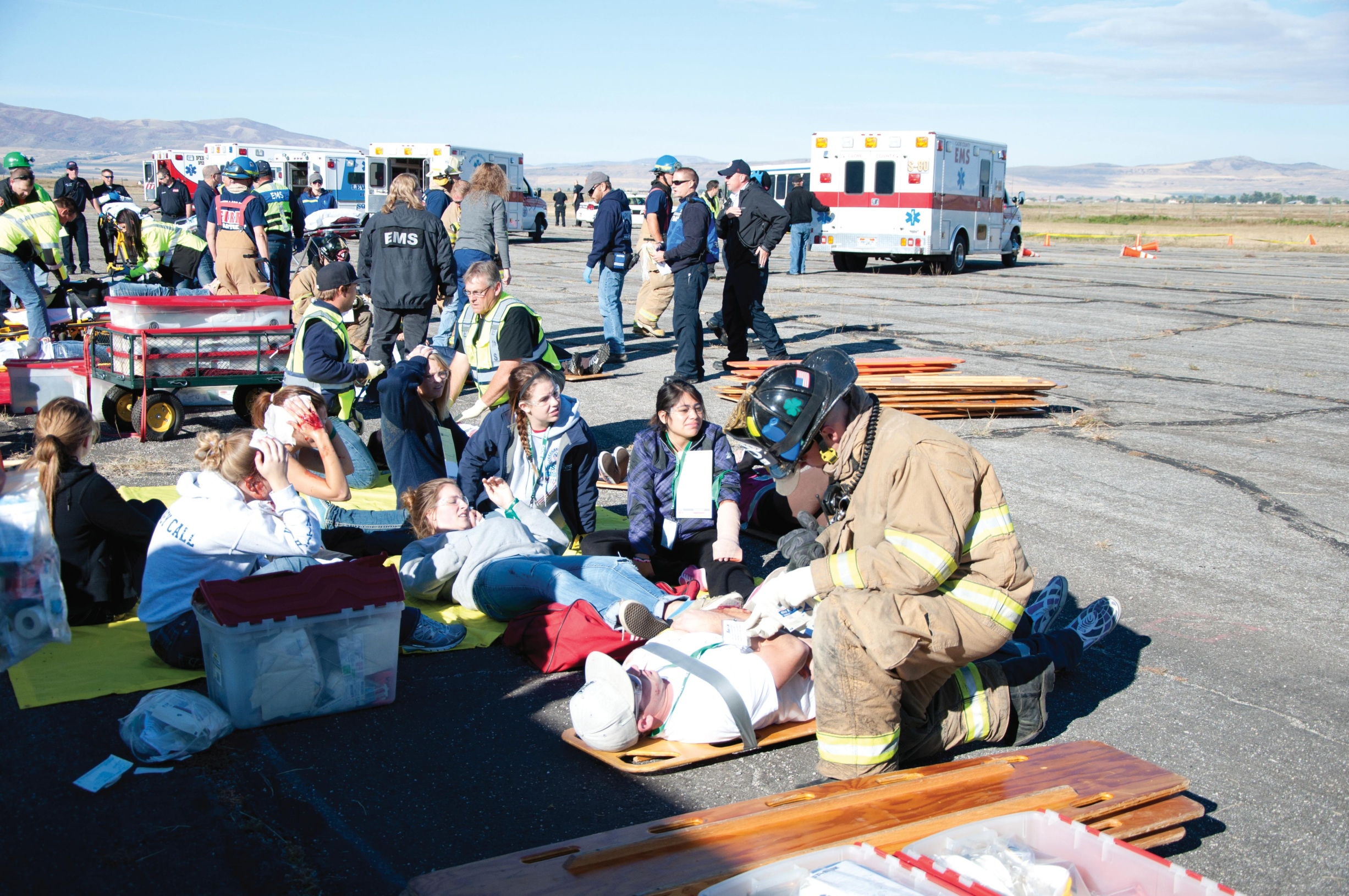Aggies participate in crisis simulation
Students from USU joined forces with 25 Cache Valley organizations to participate in a mass casualty training exercise Saturday morning at the Logan-Cache Airport.
“By definition, it’s a mass casualty,” said Brady Hansen, assistant chief for the Logan Fire Department. “It overwhelms our resources.”
Program leaders spent almost 18 months designing a plan, Hansen said. Logan itself lacks the resources necessary for such a disaster, and other Cache Valley agencies must be included.
“We all follow the same system. Everybody has pre-designated assignments,” Hansen said.
As the alert signal came, agencies responded. The Logan airport staged an incident where a USU charter plane carrying students crashed upon arrival near the runway.
Thirty-seven USU students were moulaged – covered in makeup to appear wounded – in preparation, sporting a variety of injuries which paramedics assessed and responded to on the scene.
Palettes went up in flames as the simulation began. First to the scene, the Logan-Cache Airport crash fire truck quickly handled the fire and emergency response teams arrived. The USU students were locked in buses representing the plane, and acted as the injured and screaming passengers. A triage team began their work, marking each student with a color-coded wristband and assessing their state of health.
As this process finished, the victims were moved from the mock plane to the mobile field hospital where corresponding colored tarps had been laid out. The lead EMS treatment specialist began separating the students as he checked their wristbands, declaring some more critical than initially believed. Local firefighters continued carrying victims out on stretchers.
Red-marked victims were treated first because they qualified with traumatic injuries. Ambulances raced to the scene, taking away those in the most critical conditions. Paramedics broke open cart bins full of necessary supplies to treat injuries on site.
Sydney Call, a freshman majoring in mathematics and biology, said she realized the importance of communication in a crisis.
“I think it is important for everyone to have an experience like this because it teaches you the value of teamwork,” Call said.
Despite the stress and pressure of the drill, medical teams worked together efficiently to help each of the victims. They remained composed despite the confusion of roles and the emergency situation.
In the midst of the chaos, two students were flown out by medical helicopters and many were transported to local hospitals via ambulance. By the time an hour had passed, every injured victim had been safely moved to a local medical facility. This was a benchmark goal outlined before the incident, according to Hansen.
Participants were excited to have reached it.
Hansen said he knew the drill, having experienced it before, but this simulation was the most successful and organized yet. Despite the difficulty in preparing for this event, local emergency response teams agreed it is necessary.
“It’s important to train for an event like this,” North Logan City Fire Marshall Jason Killinen said. “It would tax our resources quite a bit, so we need to be prepared.”
The staging promotes and protects public health and safety, according to Logan Fire Marshall Craig Humphreys. He said more than 180 people participated directly on site with the simulation – medical staff, firemen, police, airport management, and disaster victims.
This number does not include the great amount involved at medical facilities, on phone or radio calls, dispatchers or people working behind the scenes. The plan is complex and involves many resources, but it has been made, Humphreys said.
– amanda.grover12@gmail.com

